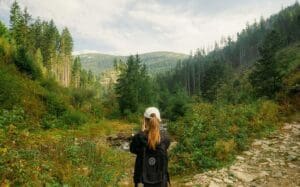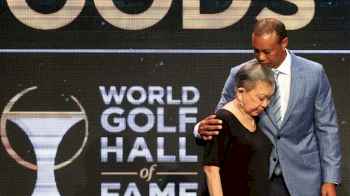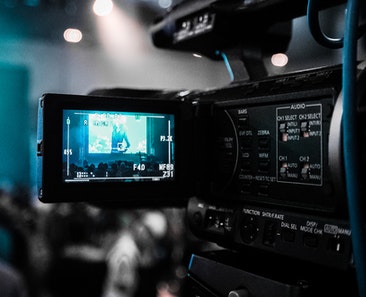An In-Depth Conversation with Alison Schrag: Exploring Urban Wildlife Conservation

Alison Schrag, an experienced Fish and Wildlife Technician in New York City, is passionately committed to promoting urban wildlife conservation.
She earned her Bachelor’s degree in Environmental Science from SUNY College of Environmental Science and Forestry, focusing on wildlife biology. Alison excels in crafting and executing strategies for habitat restoration, species monitoring, and public education, all designed to enhance the harmonious coexistence of city dwellers and local wildlife.
In her professional capacity, Alison has led significant projects like the Urban Wildlife Initiative and the Aquatic Habitat Restoration program. These projects have not only revitalized urban ecosystems but have also heightened public awareness of the critical role of biodiversity within urban settings. Moreover, Alison is a fervent educator and advocate for environmental stewardship, frequently leading workshops and seminars to engage communities in conservation activities.
A devoted birder and wildlife photographer, Alison Schrag channels her hobbies to broaden public engagement with nature, showcasing the hidden splendors of urban biodiversity through her lens. Both in her professional work and personal pursuits, Alison Schrag is a key contributor to integrating urban development with environmental conservation.
How has urban development impacted local wildlife in New York City?
Urban development significantly impacts local wildlife by fragmenting and sometimes completely removing their natural habitats. In New York City, species that once thrived in vast woodland areas now have to navigate a maze of buildings and busy streets. Our role is to mitigate these impacts by creating and enhancing urban green spaces that serve as mini-refuges and connecting corridors for wildlife.
What specific strategies do you employ to monitor wildlife in such a bustling urban environment?
We use a variety of non-invasive monitoring techniques, including camera traps, acoustic sensors, and occasionally drones, to study wildlife without disrupting their natural behaviors. This technology allows us to gather data on species presence, population sizes, and behavior patterns, which inform our conservation strategies and urban planning recommendations.
Can you describe a successful project you’ve worked on that improved conditions for wildlife in the city?
One of our successful projects was the restoration of a local wetland that had been neglected and polluted. By cleaning up the area, reintroducing native plant species, and creating small water features, we saw a return of several species of amphibians and birds within just a few years. This project not only benefited the wildlife but also enhanced the community’s access to nature.
What are some common challenges you face when working on urban wildlife projects?
One major challenge is navigating the various interests of stakeholders, including city officials, developers, and residents. Balancing ecological needs with urban development and community expectations requires a lot of negotiation and compromise. Another challenge is the limited space available for habitat creation or restoration in a densely populated city like New York.
How do you engage the public in your conservation efforts?
Public engagement is crucial for the success of conservation initiatives. We host informational sessions, workshops, and guided nature walks to educate the community about local wildlife and our ongoing projects. We also encourage citizen science programs where people can participate in data collection, which helps them feel connected to the conservation outcomes.
What role do you think technology will play in future conservation efforts?
Technology is already playing a significant role in conservation, and I believe its influence will only grow. Advanced data analytics, remote sensing, and AI can help us better understand ecological patterns and predict future environmental impacts. These tools will enable us to make more informed decisions and implement proactive rather than reactive conservation strategies.
What inspired you to focus on urban environments rather than more traditional natural settings?
Growing up in New York City, I was always fascinated by how nature persists and adapts in urban settings. I chose to focus on urban environments because I believe that conservation efforts in cities can have dramatic impacts not only on biodiversity but also on human well-being. Cities are where change needs to happen, and being part of that change is incredibly rewarding.
What’s one piece of advice you would give to young conservationists?
My advice would be to remain flexible and open to multiple career paths within conservation. The field is incredibly diverse, and opportunities can come from unexpected places. Also, don’t underestimate the importance of policy and community engagement—conservation is as much about working with people as it is about working with wildlife.
Looking ahead, what new initiatives or projects are you most excited about?
I am particularly excited about our upcoming initiative to integrate native plant species into urban landscaping across the city. This project not only aims to support local pollinators but also to educate the public about the importance of native flora and how it can be incorporated into urban aesthetics and functionality.
How do you measure the success of your conservation projects?
Success in conservation often takes time to become apparent, but we measure it in several ways. Short-term indicators include the successful implementation of project components like habitat restoration. Long-term measures involve tracking the stability or increase in wildlife populations, improved health of ecosystems, and enhanced community awareness and involvement in conservation practices.
Read more:
An In-Depth Conversation with Alison Schrag: Exploring Urban Wildlife Conservation



